This week Dr Abbie Tipler is back for our latest Vet Check looking at dental disease in dogs and cats (we do love our cat friends too). Dr Abbie works at Mosman Vet in Sydney and has taken some time out of her busy schedule to answer all our questions about teeth!
What kind of dental problems can dogs and cats get?
The most common dental problem that veterinarians see is periodontal disease. This is disease of the ligaments and structures surrounding the tooth. Untreated this can eventually lead to infection of the tooth root or surrounding structures and eventual loss of the tooth. Severe cases can affect the bone and even lead to infection of the bone (called osteomyelitis). In the case of severe periodontal disease, the tooth is better off extracted, but some can be saved with subgingival scaling and polishing.
Another dental problem we often see is damage to a tooth. This can be in the form of a chipped tooth or slab fracture. These can be very painful if the nervous structures within the tooth are exposed. They are usually caused by chewing on hard objects, for example stones, or sometimes even bones! Chipped teeth, teeth with slab fractures and also teeth with periodontal disease can lead to tooth root abscesses. These are also very painful and usually the patient becomes quite unwell.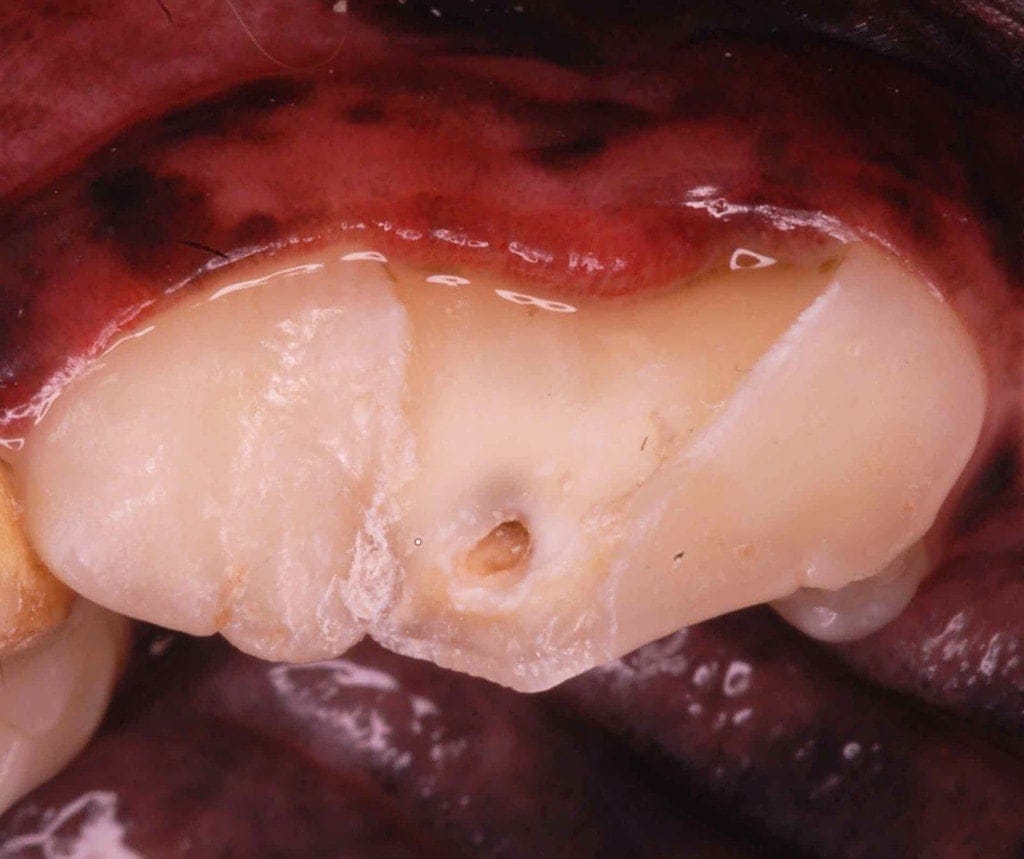
There can also be problems with how the teeth are structured within the mouth or how everything ‘fits together’. Examples of this are undershot and overshot jaws, teeth which are crowded (too many teeth in one area) and teeth that grow on an unusual angle.
And finally, we see what is called a ‘retained deciduous tooth’. This is a baby tooth that hasn’t fallen out as it should do between around 4 and 6 months of age. We often extract any of these abnormal teeth at desexing, because if they remain permanently, they can be problematic to the adjacent tooth, leading to an increased risk of disease in this adjacent tooth.
What are the signs that indicate that a dog or cat might have dental disease?
The common sign is bad breath! The technical term for this is halitosis – nasty word for a nasty sign! You may also notice a discoloured tooth or tooth with a roughened surface. You can also check the gums of your dog at home and they should be a light pink and not a dark pink, reddened colour. Tartar appears as yellow or dark brown. If your dog has any problems with eating, drops food from the mouth or simply goes off their food, then a vet check might be advisable.
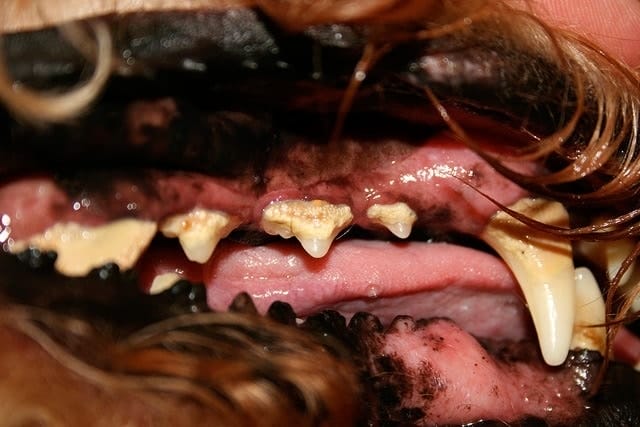
Vets usually use a grading scheme to assess dental disease. Grades vary between 0 and 3, with 0 being perfect gums and teeth, and 3 being teeth with severe periodontal disease. A vet can also look to see if there are any teeth requiring extraction. It is rare for vets to place fillings in a tooth as the structures surrounding the tooth are usually affected and therefore fillings are pointless. Signs indicating the need for extraction include root exposure, chipped teeth where pulp is exposed (the centre of the tooth) and if there is evidence of tooth root infection (pain, swelling appearing outside of the oral cavity, pus leaking from the sides of the tooth when probed).
Can dental disease happen in old and young dogs?
It certainly can. As with humans, the age of onset and severity of dental problems is extremely varied. Some dogs never need dental work their entire lives whilst others need annual attention. Some breeds are predisposed to dental disease, for example brachycephalic dogs (those ones with the squashed noses like Pugs, Bulldogs and Boston Terriers) are prone to overcrowded mouths (too many teeth for the area). Plus there are other breeds that are more prone to periodontal disease including Standard and Toy Poodles, Yorkshire Terriers, Maltese , Pomeranians, Shetland Sheepdogs, Cavalier King Charles Spaniels, Papillons, Dachshunds and Havanese.
What kind of things can I do as an owner to prevent my dog and cat from getting dental problems?
In my opinion, home care is best broken down into two options. Which is utilised often depends on the individual dog as with some dogs, even when owners have all the will in the world, they won’t allow tooth brushing! The best thing would be to combine both of these methods.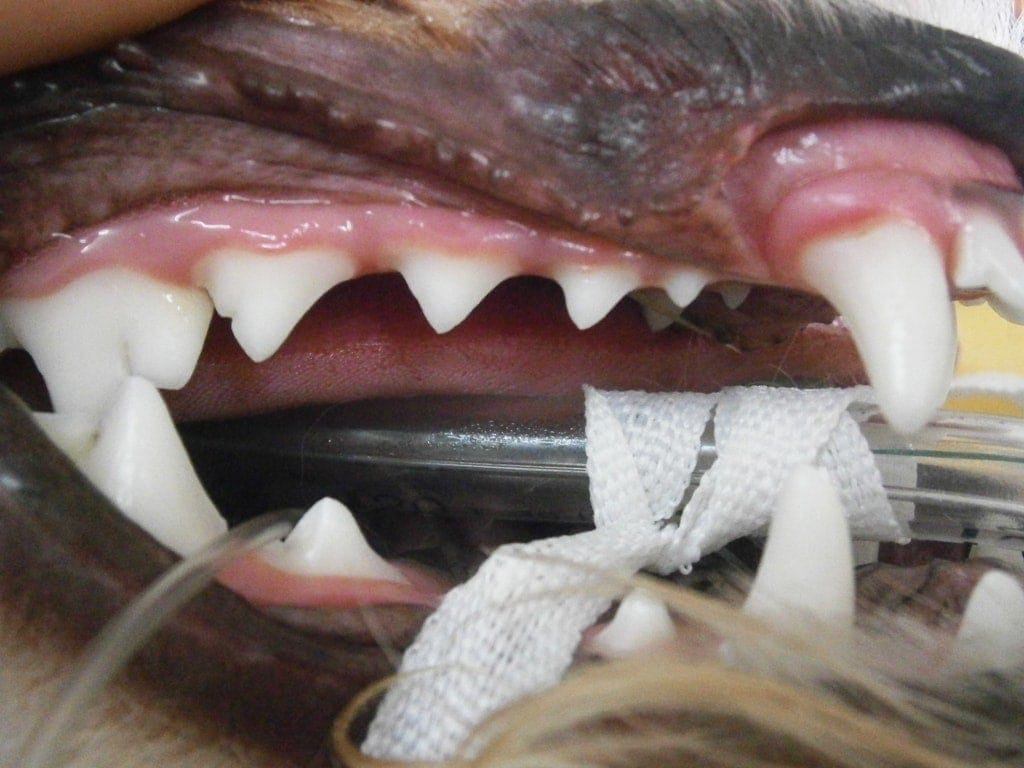
1 – Tooth brushing – Brushing your dogs teeth is undoubtedly the ‘gold standard’ ie. best thing you can do. This needs to be done three times per week to have any real effect. When successfully done, it can significantly reduce the need for dentistry as time goes by. You can use a human baby toothbrush, but not human toothpaste (these contain sudsing agents which make the toothpaste foam)! Pet toothpaste is nicely flavoured for pets, for example chicken or seafood flavoured – yum!!
2 – Dry food and Dental diets – Contrary to popular belief, dry food has been shown to be most successful at reducing periodontal disease compared with other attempted dietary methods, for example bones. Bones can in fact sometimes do more harm than good in my experience . Dry food increases salivation and saliva is the best therapy for gum and tooth protection! Some dry food is especially designed to reduce periodontal disease, as they are larger biscuits. This size reduces the risk of your dog swallowing the biscuit whole ensuring you get the positive effect of crunching and therefore saliva production. They are also higher in fibre, which means that the kibble won’t shatter when chewed and instead the tooth sinks into the kibble, and helping to scrub away plaque as chewed. You should transition your dog onto any new diet gradually, slowly mixing in more each day and subtracting the old diet. Ask you vet which diet is the most appropriate for your dog or cat.
What treatments are available for dogs and cats with dental disease?
As always, prevention is better than cure, and early intervention most definitely helps prevent major extractions involving longer anaesthetic times later in life. When the gum is starting to show evidence of inflammation (reddening at gum line) this is when subgingival scaling and tooth polishing can be indicated. A few scales along the way is a much healthier and cheaper option in the end. Periodontal disease, if left untreated, can not only lead to tooth loss but inflamed gums can potentiate the spread of bacteria around the body to other organs including the heart, liver and kidneys.
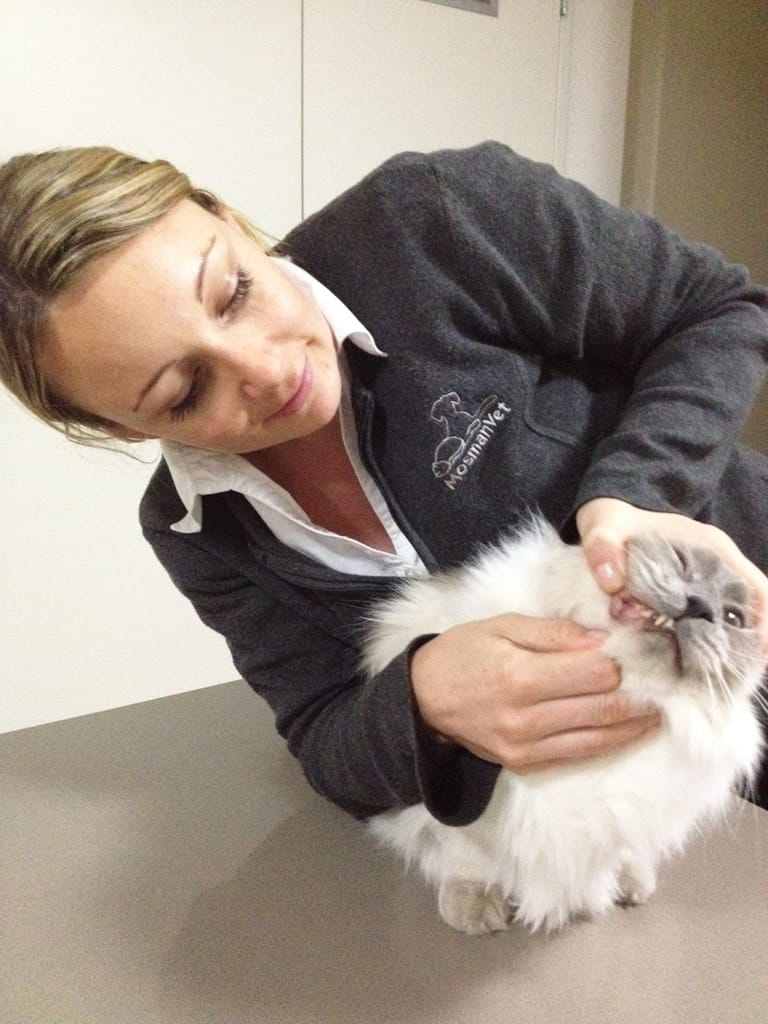
Please note: Puppy Tales provides these articles for information purposes only. For any health problems with your pet always seek immediate veterinary advice from your local veterinarian.
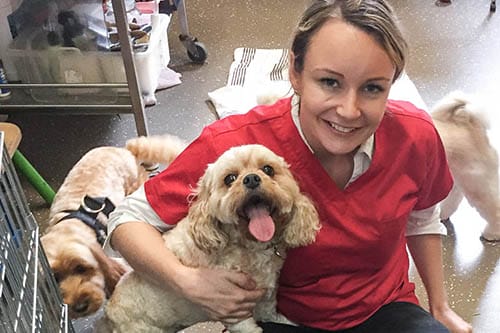
Dr Abbie Tipler, BVSc, MACVS (Surgery)
Dr Abbie is a Small Animal Veterinarian with 10 years full-time experience. Her passion is Small Animal Surgery and in 2011 she studied towards and obtained her Memberships in Small Animal Surgery from the Australian College of Veterinary Scientists. Although surgery is her special interest, she loves all aspects of General Practice, especially canine medicine. She lives with her family and two Ragdoll cats.


